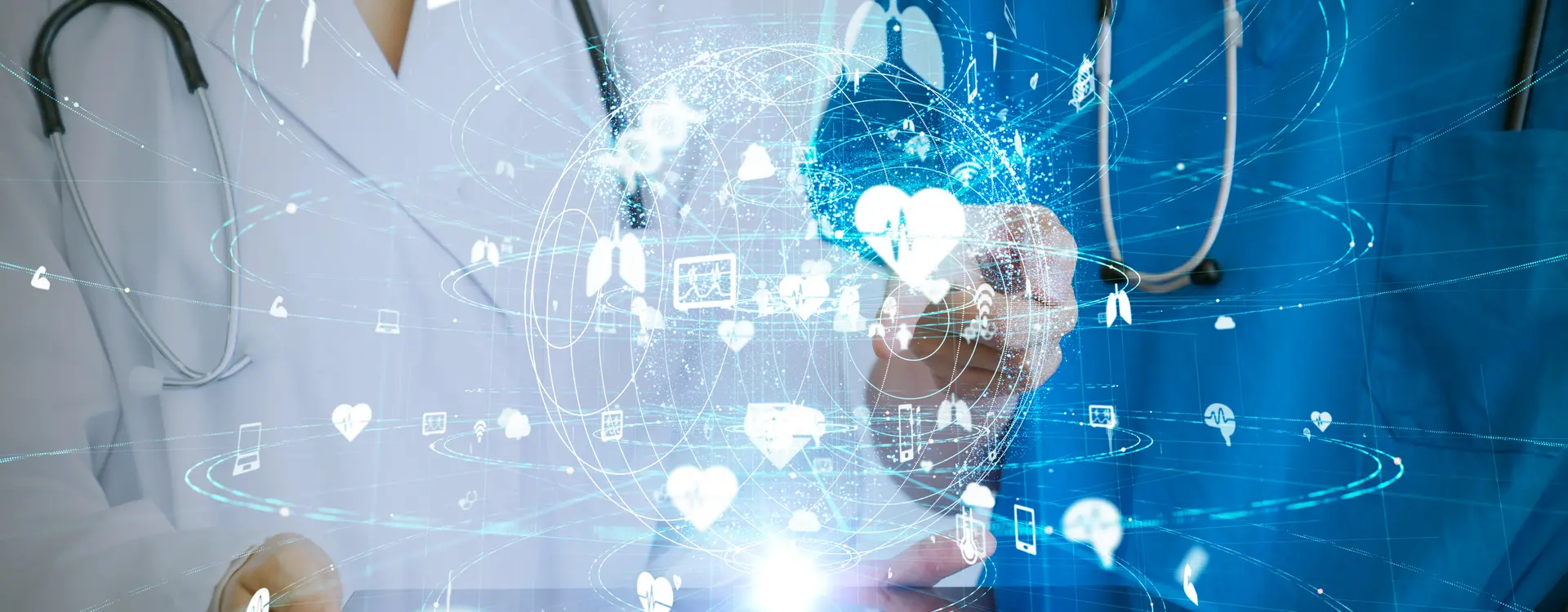About the project
Establishment of a network of university hospitals and high-security laboratories to implement standards for organ models, targeted infections, native tissue and autopsy samples, analyses and data management in the form of an agreed process chain for research into COVID-19 and other diseases. In addition, a larger number of organ models were to be created to enable more meaningful studies.
In the future, the establishment of donor-specific native tissue and organoid banks will serve to examine questions of personalised medicine.
► more
Clarifying the direct or indirect involvement of central organ systems in COVID-19 is a particular challenge that Organo-Strat addressed on the basis of four specific objectives:
- Infrastructural development of a national competence network Organo-Strat
- Clarification of the organo- and cell tropism of SARS-CoV-2
- Essential understanding of organ-specific virulence in COVID-19
- Establishment of drug testing using preclinical human organ model systems
Ad 1) Throughout Germany, there were numerous but isolated expert groups for both human, organ-representative model systems that had not previously worked in the context of infection. In addition, there were BSL3 laboratories specialising in SARS-CoV-2 infections that lacked access to corresponding meaningful organ-specific infection models. In order to establish a systematic, organ-specific stratification for COVID-19, national cooperation in the form of a new network consisting of the aforementioned actors and other partners was required for structural and effective implementation and the development of reliable results. The aim was to structurally establish a network with the aforementioned groups and assigned roles, in which standards for organ models, targeted infections, native tissue and autopsy samples, analyses and data management could become effective in the form of an agreed process chain for COVID-19 and beyond.
Ad 2 ) According to the state of knowledge at the start of the project, cells permissive for SARS-CoV-2 had to have specific host factors that support viral entry, maturation and replication. However, the literature on the involvement of different organ systems and their cell types has so far been ambiguous and fragmented. Reliable data allowing an inter-organ relation of permissivity-determining host factors on mRNA and protein level were urgently needed and also had to be related to viral replication capacity and individual donor data. The determination of these factors and relationships was pursued within "Organo-Strat" and compared in native and COVID-19 tissues. The establishment of donor-specific native tissue and organoid banks also created the opportunity to examine questions of personalised medicine in the future.
Ad 3) Virus-infected cells generally undergo defined damage mechanisms and release other factors during this process for the purpose of immune activation. The identification of affected cells, the analysis of the viral proliferation capacity and the assessment of the extent of damage (virulence) in each organ system were the primary objectives here.
Ad 4) A prerequisite both for the preclinical testing of potentially anti-viral substances against SARS-CoV-2 and for the assessment of the influence of concomitant medications such as antihypertensives on the course of infection is to identify suitable infection models. Since it could not be assumed that the various organ systems were equally permissive, these first had to be identified, as mentioned in 2) and 3). Ideally, suitable models should have a robust and reproducible viral propagation capacity and allow the investigation of aspects of pharmacokinetics (e.g. absorption) and dynamics (e.g. dose-response relationship, mechanism of action). Furthermore, they allow conclusions to be drawn about influencing/reducing virulence and potential side effects. These models were identified and operated in "Organo-Strat", and the data obtained were promptly made available for use in clinical studies.
In the first funding period, a nationwide network for organ-specific stratification (Organo-Strat) was established, which is made up of experts for human organ model systems and viral infections as well as for data and quality management. Defined process chains, which serve to achieve the objectives, have been agreed and implemented so that a quality-controlled, transparent and process-standardised infrastructure can be established. An "Organo-Strat Sharepoint" information platform was established for the exchange of metadata, protocols and standards within the network. This serves as a central communication interface for quality management, which harmonises processes and methods across the entire network. In the link with the SODAR data management system, all information is merged with experimental data, processed and stored according to F.A.I.R. principles and analysed in standardised workflows. The process-oriented and modular organisation of Organo-Strat allows flexible adjustment of the network partners (sites) and adaptation of the objectives to changing framework conditions. Thanks to its preclinical and complementary orientation, Organo-Strat is an inherent network within the NUM for combating the current pandemic and beyond(pandemic preparedness).
Nine university hospitals and other non-university partner institutions are currently involved in Organo-Strat. Thanks to the very rapid constitution of the network, key results have already been collected and published at a high level.
As a significant and central contribution to the understanding of organotropism and the involvement of various organ systems in COVID-19, a "Living Systematic Review" is currently being set up, which has been registered with PROSPERO.




